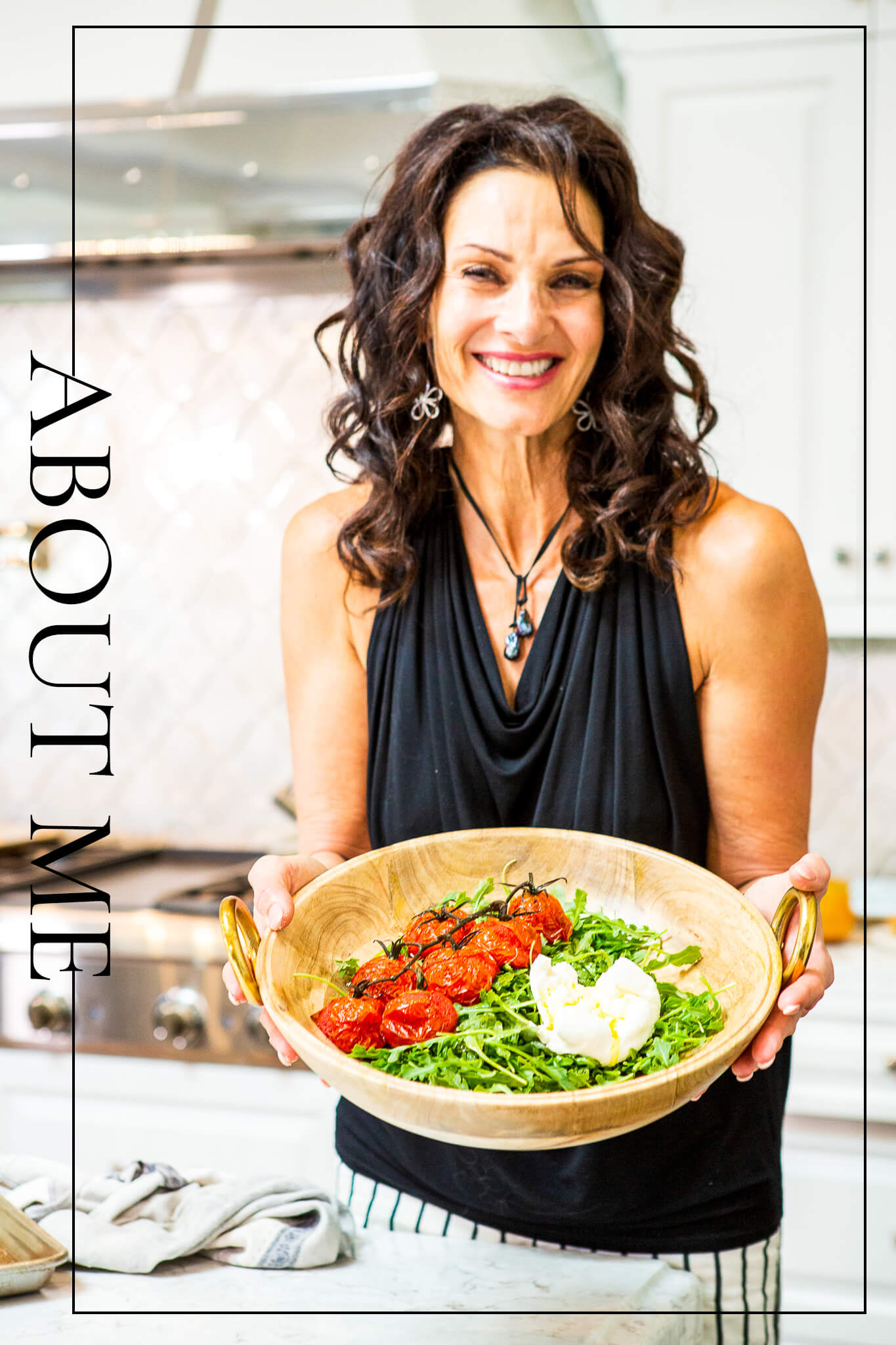Cooking a turkey can seem daunting, especially when preparing for a big holiday meal like Thanksgiving. Many home cooks struggle to get the turkey fully cooked through without drying out the delicate white meat. The traditional high heat roasting method requires frequent basting and monitoring to try to keep the bird moist. But is there an easier, more foolproof way to cook turkey? The answer is yes – slow cooking is a great alternative that consistently produces incredibly tender, juicy and flavorful results.
In this article, I’ll explain what slow cooking a turkey entails, the many benefits it offers, and provide a simple step-by-step method anyone can follow for perfect results I’ll also answer some common questions about slow cooking turkey so you can decide if it’s the right technique for your next holiday bird.
What is Slow Cooking and Why is it Good for Turkey?
Slow cooking is cooking food at low temperatures for an extended period of time, usually between 6 to 12 hours. This gentle cooking method tenderizes meats and allows flavors to develop beautifully. A slow cooker is the most popular tool for slow cooking, but it can also be done in the oven.
Slow cooking offers several major advantages when cooking turkey
-
Requires less active cooking time – Once assembled in the slow cooker or oven, the turkey can cook unattended for hours. No basting or constant temperature monitoring needed.
-
Promotes moist, tender meat – The low heat and steam distributes moisture evenly throughout while breaking down collagen Keeps even the delicate white breast meat incredibly juicy
-
Allows for more oven space – Free up your oven on busy holidays by using a slow cooker instead. You can use the oven for sides, pies and other items.
-
Infuses flavor – Herbs, vegetables, broth and spices cook right in the pot, seasoning the turkey from the inside out.
-
Prevents drying out – The gentle heat helps prevent the breast meat from drying out like it can under high heat roasting.
-
Provides a longer window of doneness – It’s much harder to overcook a slow roasted turkey.
-
Consistently great results – Takes the guesswork out of roasting for less experienced cooks.
Step-by-Step Method for Slow Cooking Turkey
Follow these simple steps for perfect slow cooked turkey every time:
1. Select an Appropriately Sized Bird
Choose a turkey that will fit comfortably in your slow cooker or roasting pan with a bit of room to spare. Allow about 1 pound of turkey per person. For most slow cookers, an 8-10 lb turkey is ideal.
2. Thaw the Turkey Safely
Keep the turkey wrapped and place it in the refrigerator for 24 hours per 4-5 lbs of turkey. For larger birds over 12 lbs, thaw in a sink of cold water changing the water every 30 minutes.
3. Remove the Giblets
Check both main cavities of the turkey and remove the bag containing the giblets and neck. Reserve for gravy or discard.
4. Dry Brine (Optional)
For extra flavor and moisture, rub the turkey all over with salt, herbs and spices and refrigerate uncovered up to 2 days before cooking.
5. Prepare Aromatics
Gather ingredients like onions, garlic, carrots, celery, apples, oranges, rosemary, thyme etc. Place some inside the cavity.
6. Generously Season the Turkey
Coat the turkey inside and out with olive oil and seasoning of choice. Get into all the nooks and crevices.
7. Add Turkey to Slow Cooker or Oven
Place aromatics and 1 cup broth in the slow cooker. Add seasoned turkey breast side up. For oven, use a roasting pan with a rack. Add aromatics underneath.
8. Cook on Low
Cover and cook for 8-10 hours on low until breast meat reaches 165°F. For the oven, keep temperature between 200°F to 250°F.
9. Allow Turkey to Rest
Let rest 20-30 minutes before carving to allow juices to redistribute.
Tips and Tricks
-
Use a thermometer to check temperature – breast should reach 165°F minimum.
-
If turkey finishes early, hold it at 140°F wrapped in towels or keep warm in a 200°F oven.
-
For crisper skin, blast it under the broiler for a few minutes at the end.
-
Make gravy from the flavorful broth. Remove excess fat first.
-
If turkey extends over the slow cooker, tent with foil instead of the lid so it cooks evenly.
-
For food safety, cook stuffing separately in a baking dish rather than in the cavity.
Frequently Asked Questions
Is it safe to slow cook a turkey?
Yes, turkey can be safely cooked at low temperatures as long as the internal temperature eventually reaches 165°F. It passes through the danger zone quickly enough.
How long does it take to slow cook a whole turkey?
Cook times vary based on size, but plan for 8-10 hours on low for a 12-14 lb turkey. Smaller birds may only take 6-8 hours.
What size turkey fits in a 6-7 quart slow cooker?
An 8-10 lb turkey will fit comfortably in a standard 6-7 quart oval slow cooker. The shape will be a tighter fit than a roasting pan.
Can you stuff a slow cooked turkey?
It’s not recommended. Stuffing cooked inside poultry can be unsafe. For food safety, cook stuffing separately and use aromatics in the cavity.
Should I baste or tent foil over the turkey?
No basting or tenting needed! The steam and gentle heat does this work for you. Keep the lid secure.
Moist and Tender Turkey – Give Slow Cooking a Try
During the holidays, take a break from roasting and try slow cooking your turkey instead. The low indirect heat keeps the meat incredibly juicy and tender with minimal effort required. Follow the easy method above for amazing results every time. Once you discover how delicious and foolproof slow cooked turkey is, you may never go back to roasting again!
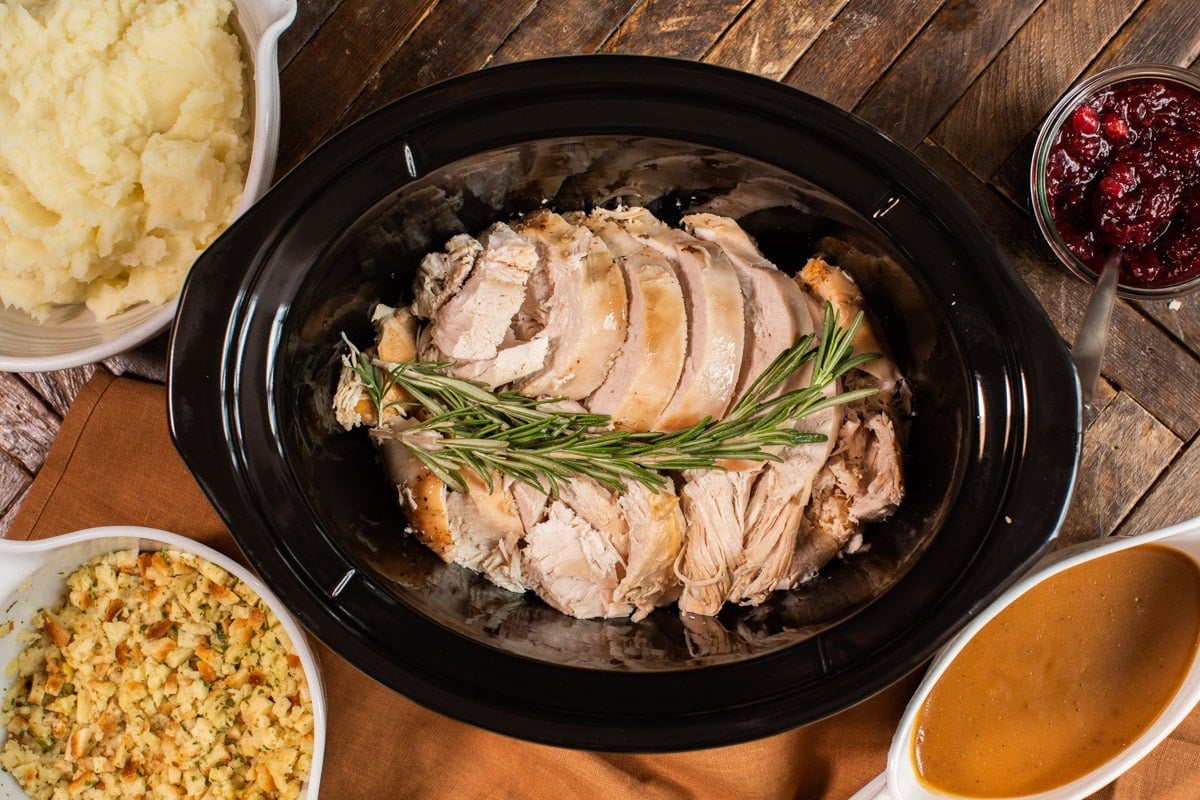
Share Your Thoughts…Lastly, if you make Overnight Turkey, be sure to leave a comment and/or give this recipe a rating! Above all, I love to hear from you and always do my best to respond to each and every comment. And of course, if you do make this recipe, don’t forget to tag me onÂ
Makes: 8-10 servings
Prep Time: 20 minutes
Cook Time: 10 hours
Total Time: 10 hours & 20 minutes
- 14-16 pound turkey (see Chef’s Note)
- extra-virgin olive oil
- salt & freshly ground pepper
- poultry spice
- paprika
- garlic powder
- 2 heads of garlic, peeled
- 2 yellow onions, cut in thick slices
- 4 celery stalks, coarsely chopped
- 3 parsnips, peeled and coarsely chopped
- Heavy duty aluminum foil
Preheat oven to 180°F. If oven won’t go that low, set it to its coolest setting; anything up to 200°F is fine. Thoroughly wash turkey inside and out. Pat dry. Rub turkey with olive oil and then sprinkle spices all over it. Season inside as well as outside. Place turkey in a large roasting pan on a rack.
Place garlic, celery, parsnips and onions under the rack. Add enough water to come to the bottom of the rack and not touch the turkey itself. Add the turkey neck, liver and gizzard to the water in the pan.
Cover the pan completely by making a tent of heavy-duty aluminum foil. You must make sure that all the edges of the pan are covered so that the moisture will remain in the pan. This is the only tricky part to cooking a turkey like this.
Cook the turkey for 9 hours. Use a meat thermometer to check the turkey’s internal temperature and make sure the thickest part of the turkey thigh is at 155°F. The turkey will continue to cook so don’t worry that it’s too low. See notes below if the turkey isn’t at 155°F.
Raise the oven temperature to 450°F, remove the foil tent and cook an additional 15-20 minutes until the skin is browned and crispy and the breast is at 160°F and the thigh is 170-175°F.
Remove the turkey from the oven and allow to rest for 20-30 minutes, with the foil loosely covering the turkey. Save the drippings for the Delicious Turkey Gravy.
Carve the turkey and serve!
Chef’s Note:
If you are making a larger turkey, just increase the temperature to 200°F and follow the same instructions. The key is to remove the turkey when it reaches the correct internal temperature of 155°F for the thigh. I tried a 22-pound turkey and it took 10 hours at 200°F.
If, after 10 hours, turkey hasn’t reached 155°F and you need the oven space, increase the temperature to 300°F and check every 15 minutes.
You can leave the turkey in the pan to cool. Cover with foil and then put heavy towels over it if you need to leave it for a while.
Strain the drippings and refrigerate them. Remove the fat layer and use the drippings as a base for your gravy (see Delicious Turkey Gravy recipe).
See additional tips in blog post.
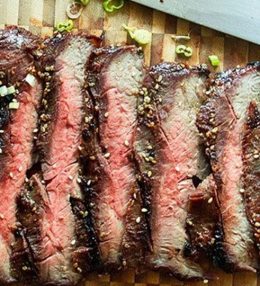
- 0 / 5
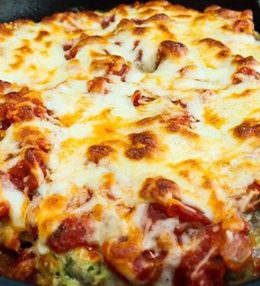
- 0 / 5
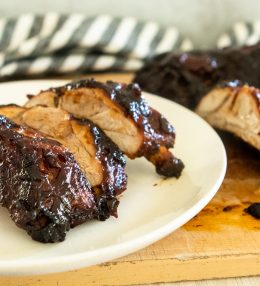
- 5 / 5
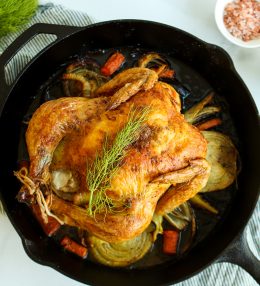
- 0 / 5
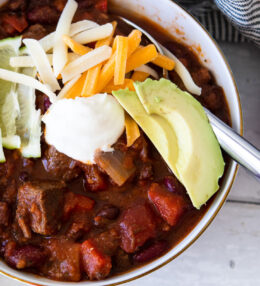
- 5 / 5
